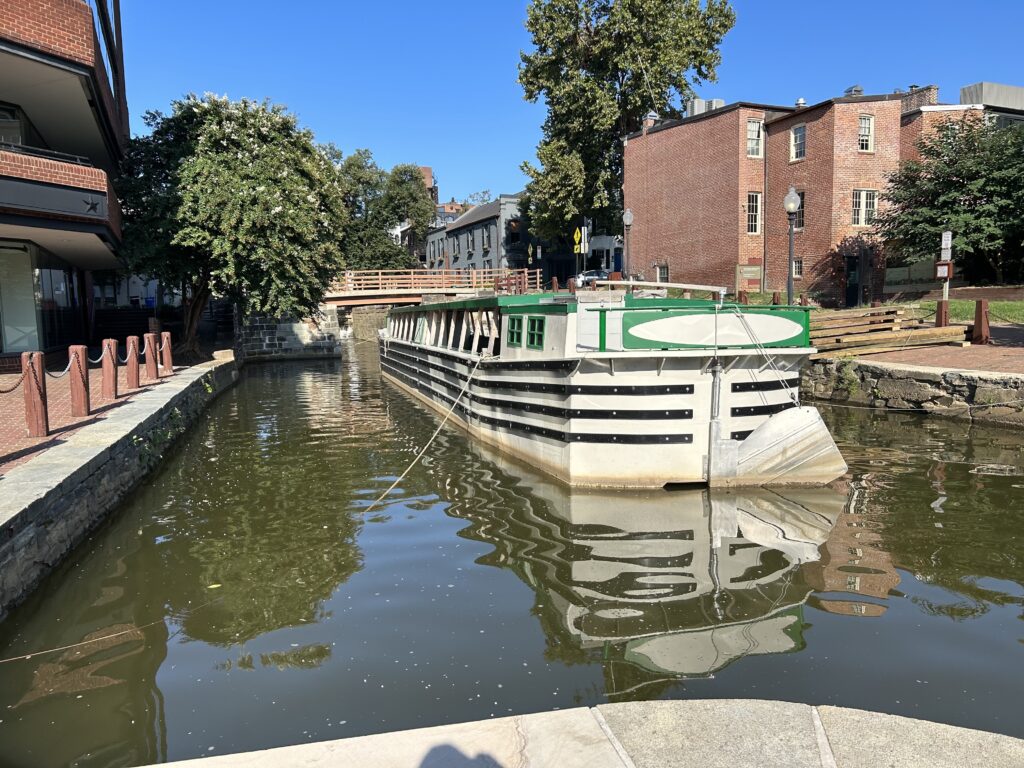Drought Conditions Lower Potomac, Keep Canal Boats Docked
By • September 5, 2023 0 2069

About five fewer inches of rain than normal for the region dropped this year, which has caused unusually low water levels. The Potomac River, specifically, supplies drinking water to millions in the Washington, D.C., area. Water managers recently announced they might need to draw from backup reservoirs upstream.
As of the end of August, the flow of current on the river at Point of Rocks, Maryland, is 665 million gallons per day. Drinking water supplies of 400 million gallons of water per day are withdrawn every 24 hours and the absolute minimum flow required to maintain the river’s aquatic ecosystems is 100 million gallons per day, according to DCist.
The drought conditions have affected the Canal Boat in Georgetown. Tours on the “Georgetown Heritage” were cancelled Aug. 30 through Sept. 1 (pre-sold tickets were refunded), and since then the organization which oversees the vessel, Georgetown Heritage has posted a banner on its website that reads: “We are experiencing historically low water levels on the Potomac, which has temporarily made it impossible for us to operate the Canal boat. We will continue to assess the situation and resume tours as water levels return to a normal level. Thank you for understanding!”
While the Potomac’s water levels did return to normal in July after storms, levels have dropped again. For the area, late summer and fall are the most drought-prone times of the year in the area, so the worst may be yet to come.
If you drive over the American Legion Bridge, it’s easy to see just how low water levels are. Islands in the middle of the Potomac have popped up that many have not noticed before.
Michael Nardolilli, executive director of the Interstate Commission on the Potomac River Basin, told the Washington Post that he did not want to send people into a panic and have them buying bottled water. He recommended to continue to rely on taps but to use water wisely.
If dry conditions continue, water conservation efforts may be put into place. The worst droughts in the area occurred in the 1930s and 1960s.

